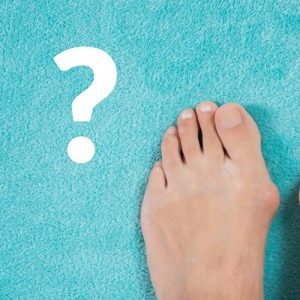Dr. Brian Nagy | February 15th, 2018
Posted In: Bunions
 Bunions are a common foot problem in adults and can often appear as you age. Although bunions aren’t as common in children, bunions can begin to appear early on if the wrong size shoes are worn. Bunions may also appear if you receive an injury to your foot that results in structural abnormalities. The right bunion treatment can relieve your chronic pain and get you back on your feet.
Bunions are a common foot problem in adults and can often appear as you age. Although bunions aren’t as common in children, bunions can begin to appear early on if the wrong size shoes are worn. Bunions may also appear if you receive an injury to your foot that results in structural abnormalities. The right bunion treatment can relieve your chronic pain and get you back on your feet.
Located at the base of the big toe, a bunion is caused by excessive pressure or repeated movements that cause the bone of the toe to press back into the base knuckle joint that connects the toe to the foot. The toe begins to move toward the others, resulting in a lump at the base near the joint. The lump can become extremely painful over time if the situation isn’t corrected. Wearing shoes that fit poorly or walking with an abnormal gate can cause excessive pressure to be placed on the toes, resulting in a shift of the bones.
The first signs of a bunion are redness and swelling. As the toe continues to move further out of place, a bony bump will appear. As the bump continues to grow, it can cause friction as it rubs against the inside of your shoes. Pain and discomfort are also common. The growth of the bunion can also begin to limit the range of motion of the toe joint causing it to feel stiff and sore. There are several other foot issues that look like bunions but actually aren’t.
A bunionette appears on the outside of the foot at the base of the pinky toe. Bunionettes form in much the same way as a bunion, except for the smaller toe is the one that shifts. The pressure placed on the toe from tight, narrow shoes or walking on the sides of the feet can force the bones of the toe to point inward causing a lump to form on the outside of the joint.
There are several ways to treat bunions that don’t require any type of surgery. Toe splitters and orthotics can be used to separate the toes and force them to naturally move back into their original position. Bunion pads placed over the bump will prevent the area from rubbing against the inside of the shoe causing pain and irritation. Soaking the feet in warm water can relieve pain and discomfort that is associated with bunions, callouses and other issues involving the feet.
In cases, where the bunions are severe, surgery may be recommended if the pain starts to affect your day to day activities. Over time, the toe may actually become deformed causing intense chronic pain. The resulting inflammation can make it difficult to walk or move without crutches or a walker. At this stage, surgery is needed to reduce the size of the growth and help to re-align the bones in the toe and foot. When conventional treatment fails to offer the relief you need, Dr. Nagy can evaluate the condition of your foot and work with you to determine the best course of treatment.
If you have a family history of bunions and other foot problems, your risk of developing them is much higher than normal. There are things you can do, however, to reduce your risk and keep your feet healthy and pain-free. First and foremost, always wear comfortable shoes that fit properly. You should also give your feet a break from shoes every day by walking barefoot for an hour or two. This allows your feet to stretch out and prevents them from being cramped inside your shoes. Exercise your feet to reduce any swelling and inflammation that may build up during the day. Exercise also increases the flow of blood to the feet.
If you have bunions or bunionettes and are experiencing chronic foot pain, call Dr. Nagy of Nagy Footcare. He can examine your toes and identify the cause of your pain and discomfort. After a thorough examination, he will create a bunion treatment plan that will reduce your pain and address the cause of the problem. By eliminating the cause, he can teach you how to properly care for your feet and avoid any further structural damage.
At Nagy Footcare, our best day is when you wake up with no foot pain.
« Do You Have Foot Pain While Running? Signs it’s Time for New Shoes | 4 Causes of Foot Pain You Might Have Never Heard Of »